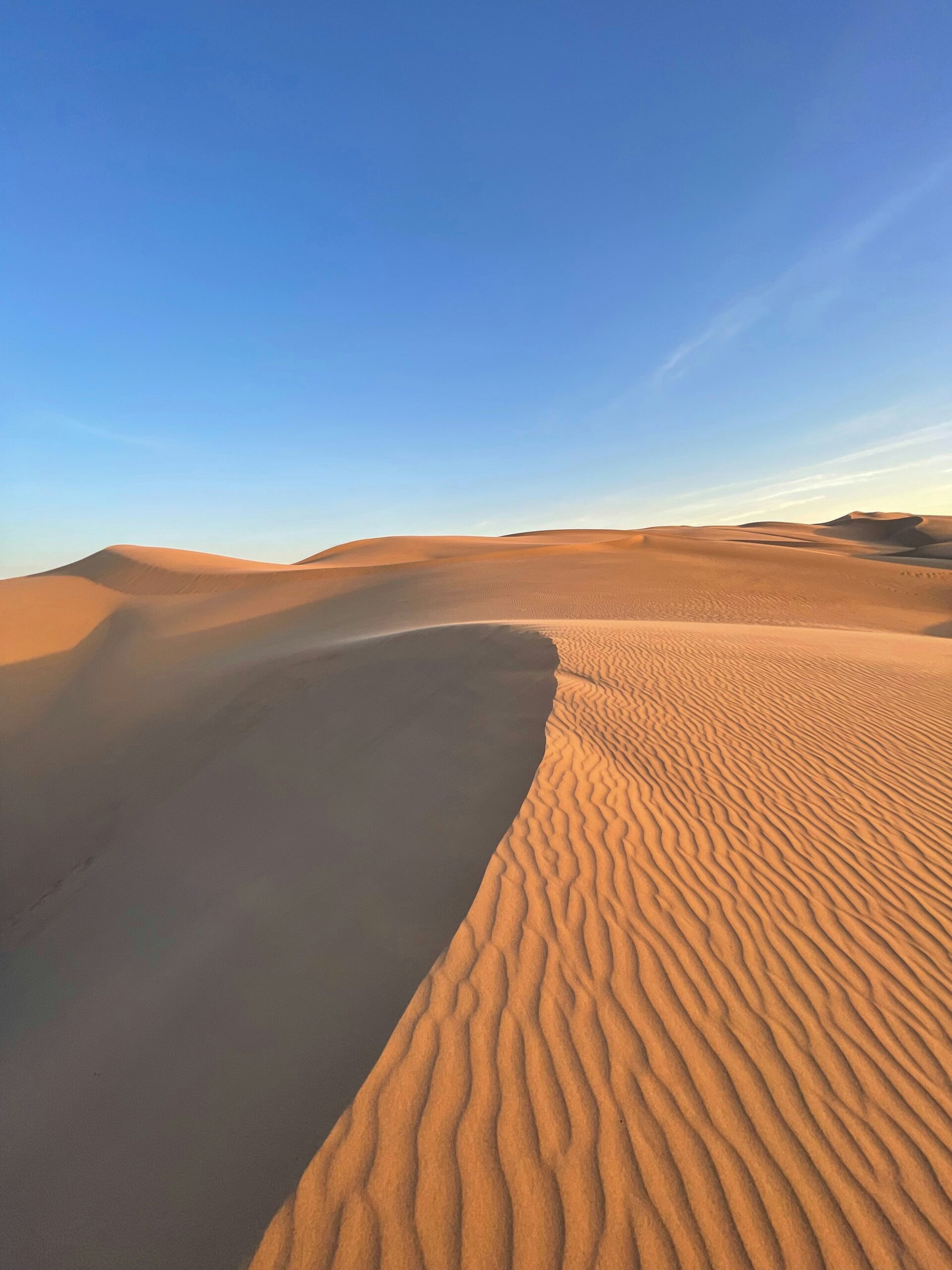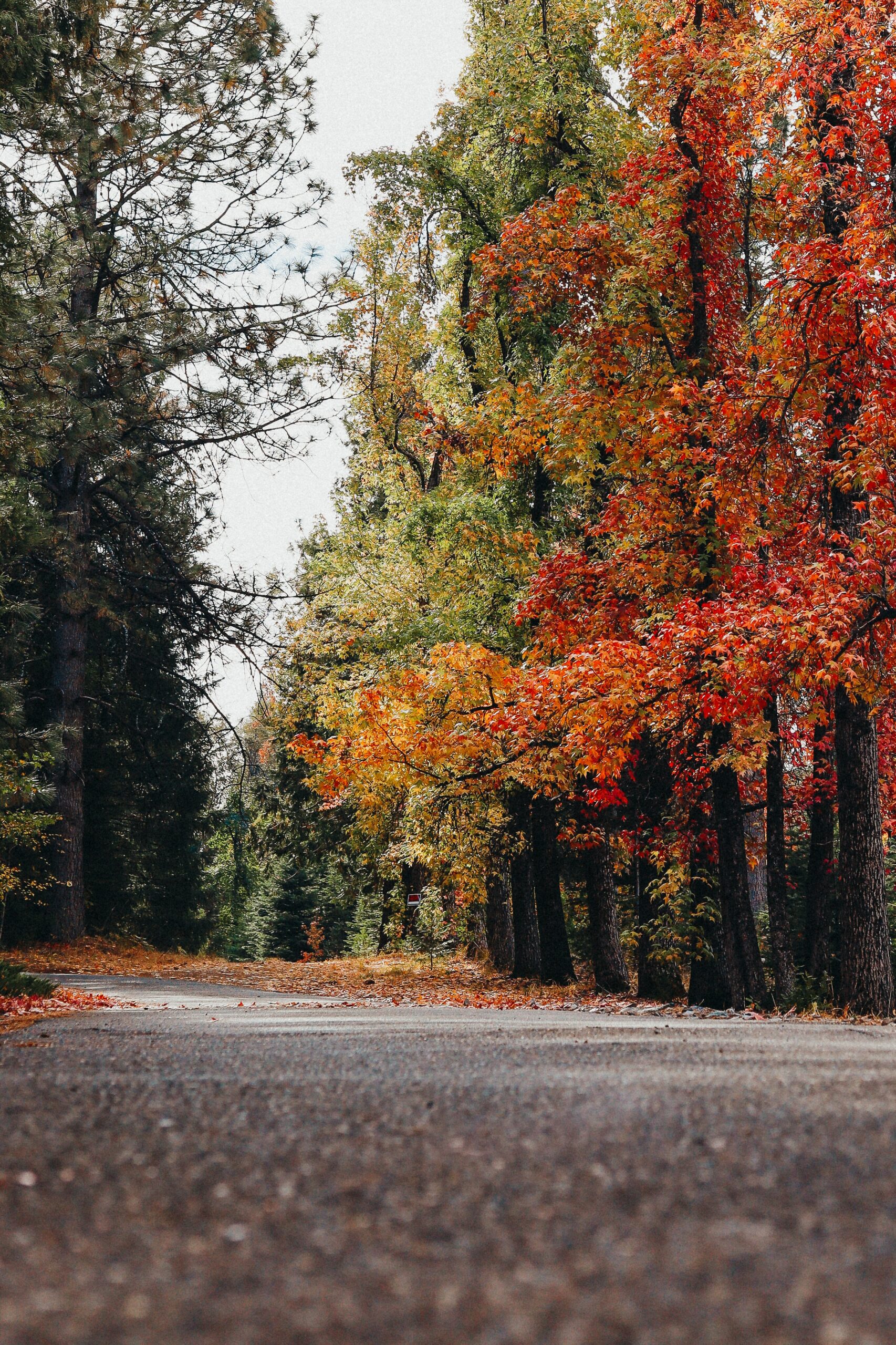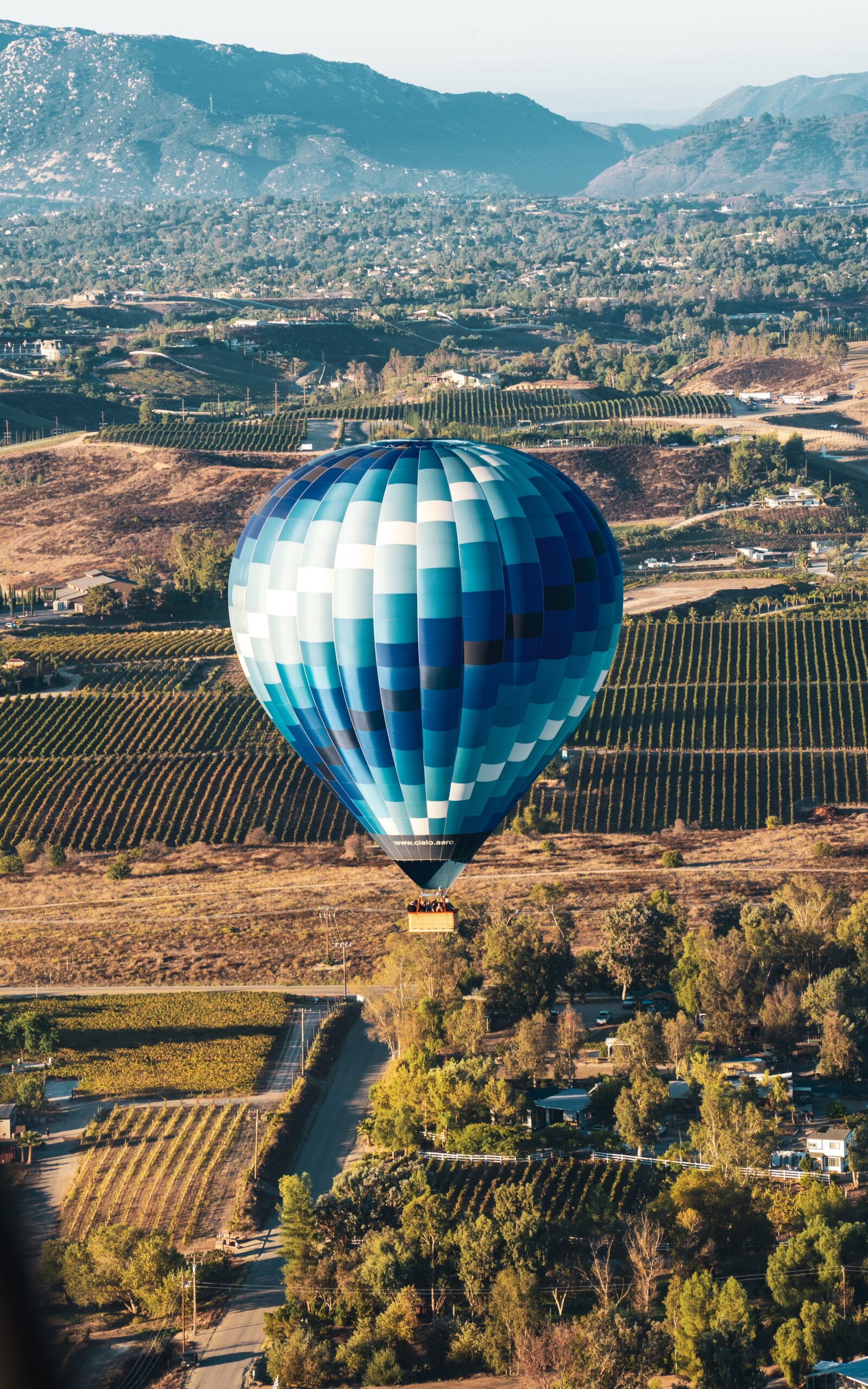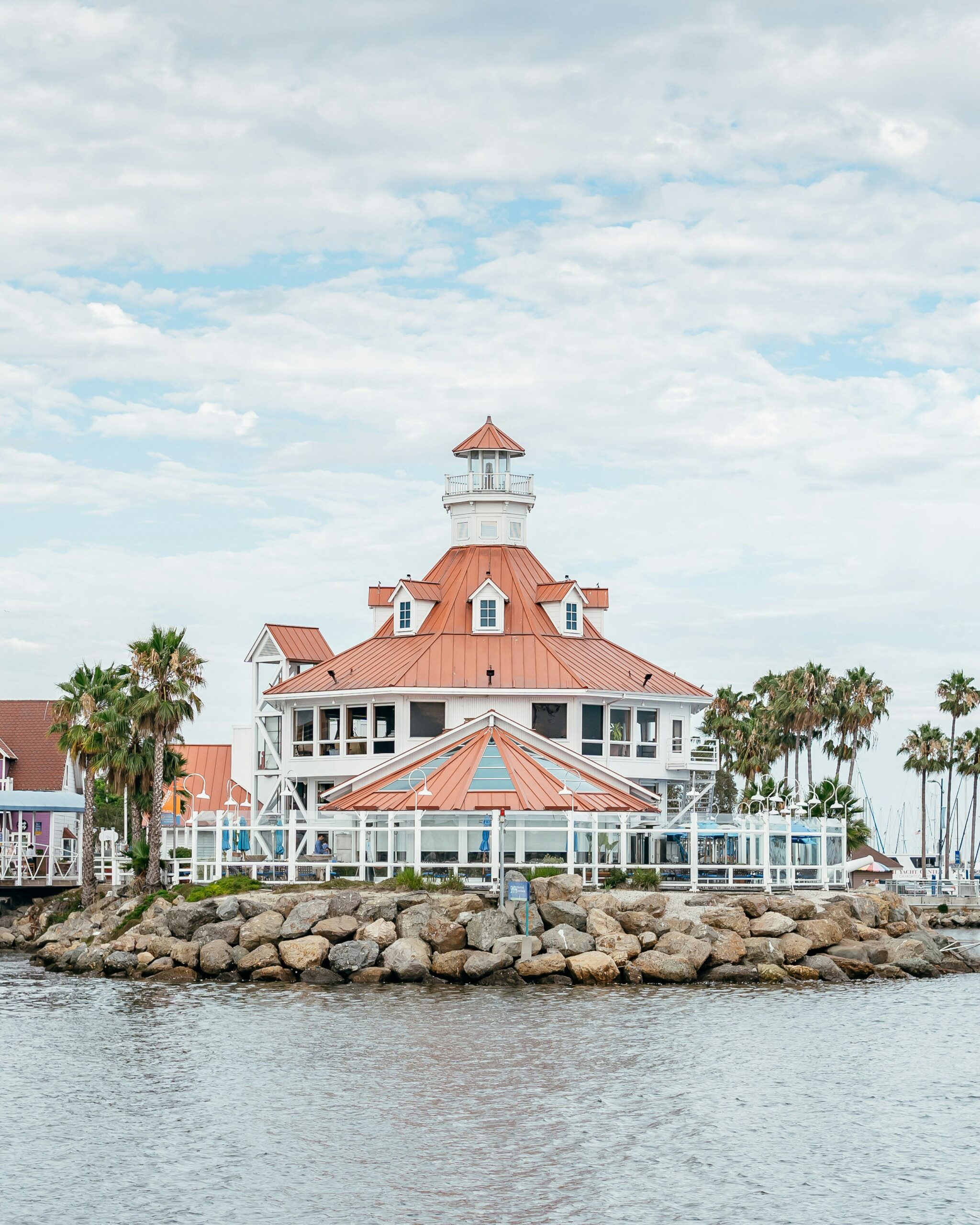Best Sand Dunes in California: Top Spots for Desert Adventures
California's coastline boasts some of the most stunning sand dunes in the world, offering a unique blend of natural beauty and recreational opportunities. The best sand dunes in California include Oceano Dunes, Imperial Sand Dunes, and Guadalupe-Nipomo Dunes Complex, each providing distinct experiences for visitors. These sandy wonders are perfect for outdoor enthusiasts, photographers, and nature lovers alike.
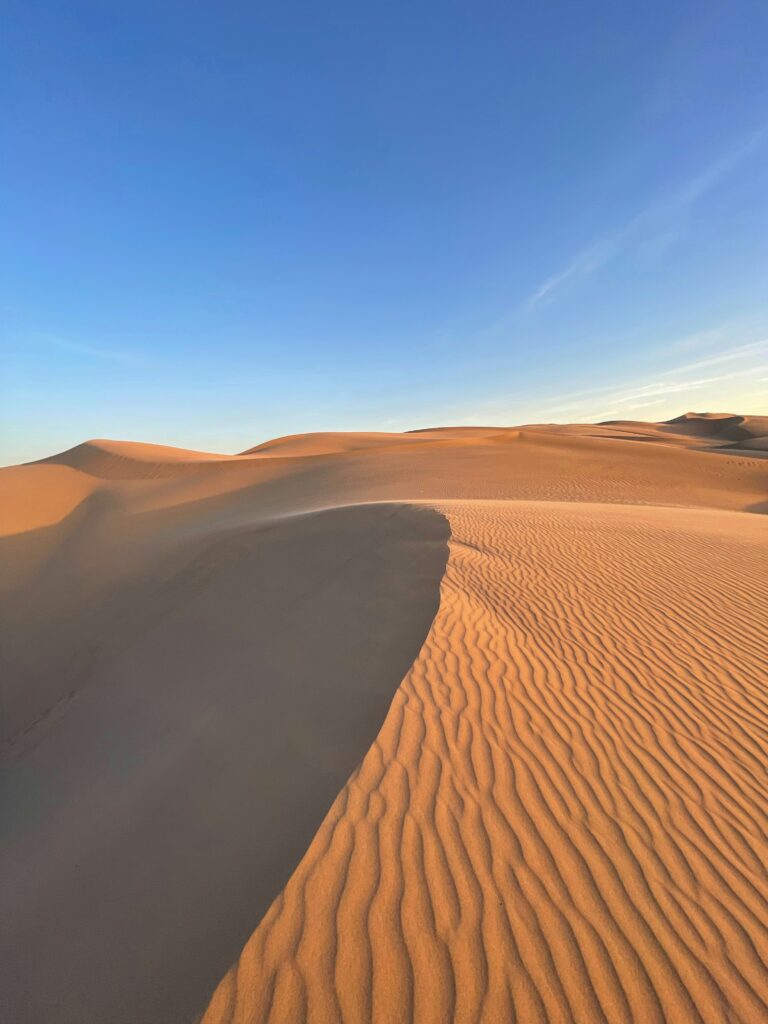
At these magnificent dunes, you can engage in various activities such as hiking, sandboarding, and off-roading. The Oceano Dunes are particularly popular for ATV and dune buggy adventures, allowing you to explore vast expanses of sand while enjoying the thrill of the ride. For those seeking a quieter experience, the nearby Guadalupe-Nipomo Dunes offer a more serene environment where you can appreciate the local wildlife and take in breathtaking views.
Don't forget your camera when visiting these natural wonders. The ever-changing light and shadows on the dunes create stunning photo opportunities throughout the day. Whether you're capturing the golden hues of sunset or the intricate patterns left by the wind, California's sand dunes provide a captivating backdrop for your photography pursuits.
Best Sand Dunes in California: Top Spots for Desert Adventures
Getting to Know California's Dunes
California's sand dunes are diverse ecosystems shaped by wind and time. They offer unique landscapes and habitats for various species.
Geographical Overview
California's coastline boasts spectacular sandy escapes that stretch for miles. You'll find dunes scattered along the state's 840-mile shoreline, from the northern redwood coast to the sun-soaked southern beaches.
Notable coastal dune systems include Oceano Dunes near Pismo Beach and Guadalupe-Nipomo Dunes. These areas feature towering sand mountains that can reach heights of up to 500 feet.
Inland, the Mojave Desert hosts impressive dune fields like Kelso Dunes. These desert formations often cover vast areas, with some spanning over 45 square miles.
Dunes Formation
Wind is the primary sculptor of California's dunes. As it blows across loose sand, it picks up and deposits particles, gradually building mounds and ridges.
Coastal dunes form when sand from the ocean is blown inland. Vegetation plays a crucial role in stabilizing these dunes, with plants like beach grass helping to anchor the sand.
In desert regions, dunes form similarly but with different sand sources. Desert winds erode surrounding rock formations, creating fine sand particles that accumulate over time.
The shape and size of dunes vary based on wind patterns, sand supply, and local topography. This creates a diverse range of dune types, from crescent-shaped barchan dunes to linear seif dunes.
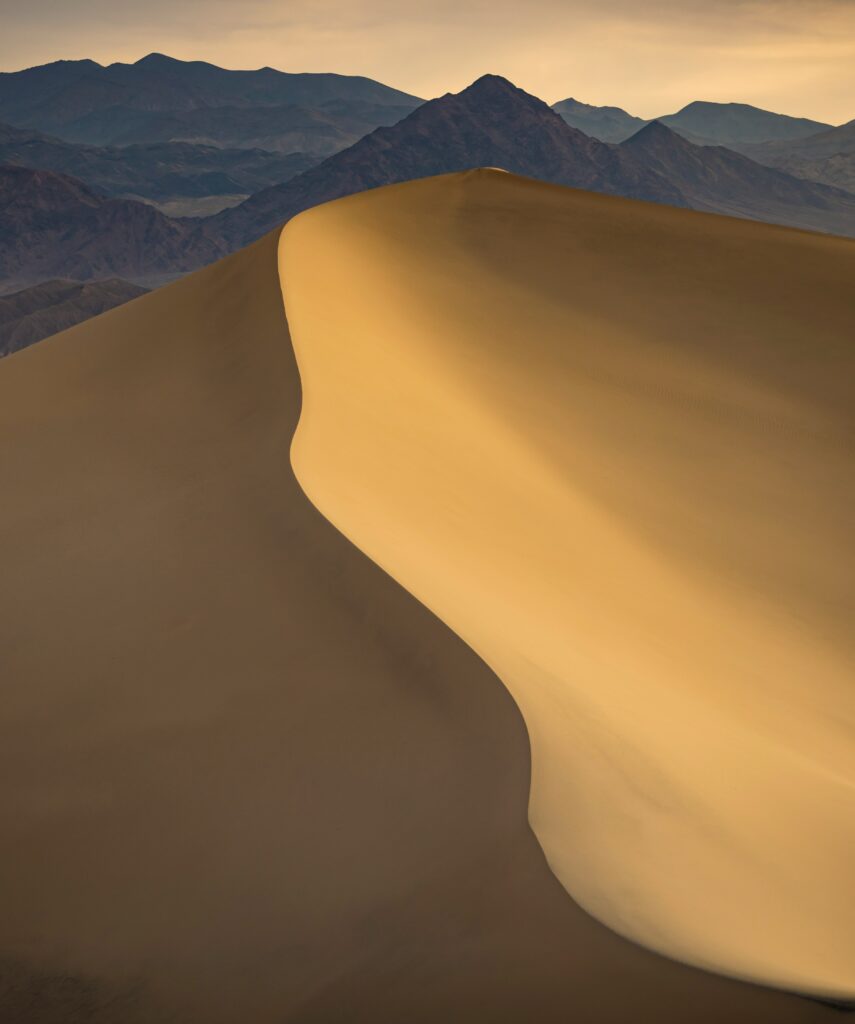
Major Dune Destinations
California boasts diverse sand dune landscapes that offer unique experiences for nature lovers and adventure seekers. From coastal expanses to desert wonders, these dune destinations showcase the state's geological marvels.
Oceano Dunes SVRA
Oceano Dunes is a popular destination for off-road enthusiasts and beachgoers alike. Located on the central coast, this State Vehicular Recreation Area spans 3,600 acres of sandy playground.
You can drive your vehicle directly on the beach and explore the dunes. It's one of the few places in California where you can camp right on the sand.
For thrill-seekers, ATV and dune buggy rentals are available. You'll find yourself zipping across the undulating landscape, feeling the rush of adrenaline with each crest.
Bird watchers will appreciate the area's diverse avian population. Keep an eye out for the endangered snowy plover, which nests in the dunes.
Eureka Dunes
Nestled in Death Valley National Park, Eureka Dunes offer a remote and serene experience. These are the tallest dunes in California, rising nearly 700 feet from the valley floor.
The journey to reach Eureka Dunes is an adventure in itself. You'll need a high-clearance vehicle to navigate the rough roads leading to this isolated wonder.
Once there, you're greeted by a pristine dune field surrounded by rugged mountains. The silence is broken only by the wind and occasional “singing” of the sand as it shifts.
Stargazing here is unparalleled due to the lack of light pollution. On clear nights, you'll feel like you can touch the Milky Way.
Kelso Dunes
Kelso Dunes, located in the Mojave National Preserve, are known for their unique “singing” or “booming” phenomenon. As you climb the dunes, you might hear a low rumbling sound caused by the movement of sand particles.
These dunes cover 45 square miles and reach heights of 650 feet. The best time to visit is during spring or fall when temperatures are milder.
Hiking to the top of the dunes rewards you with panoramic views of the surrounding desert landscape. It's a challenging climb, but the descent is pure fun as you can run or roll down the steep sandy slopes.
Keep an eye out for desert wildlife, including kangaroo rats and sidewinder rattlesnakes.
Algodones Dunes
The Algodones Dunes, also known as Imperial Sand Dunes, form the largest dune system in the United States. These massive dunes stretch for 40 miles along the southeastern edge of California.
You'll feel like you've been transported to the Sahara as you gaze upon the endless sea of sand. The dunes can reach heights of 300 feet, creating a dramatic landscape.
Off-highway vehicle enthusiasts flock to this area for its vast riding opportunities. If you prefer a quieter experience, visit the North Algodones Dunes Wilderness Area where motorized vehicles are prohibited.
Photography enthusiasts will love capturing the interplay of light and shadow on the dunes, especially during sunrise and sunset.
Mesquite Flat Sand Dunes
Located in Death Valley National Park, the Mesquite Flat Sand Dunes are the park's most accessible dunes. They're conveniently situated near Stovepipe Wells, making them easy to visit.
These dunes may not be the tallest, but they offer a picturesque landscape dotted with mesquite trees. The contrast between the golden sand and the rugged mountains in the background creates stunning photo opportunities.
Explore the rippling patterns left by the wind on the sand's surface. Early morning or late afternoon are ideal times to visit when the low sun casts long shadows, accentuating the dunes' textures.
Keep an eye out for animal tracks in the sand, revealing the nocturnal activities of desert creatures.
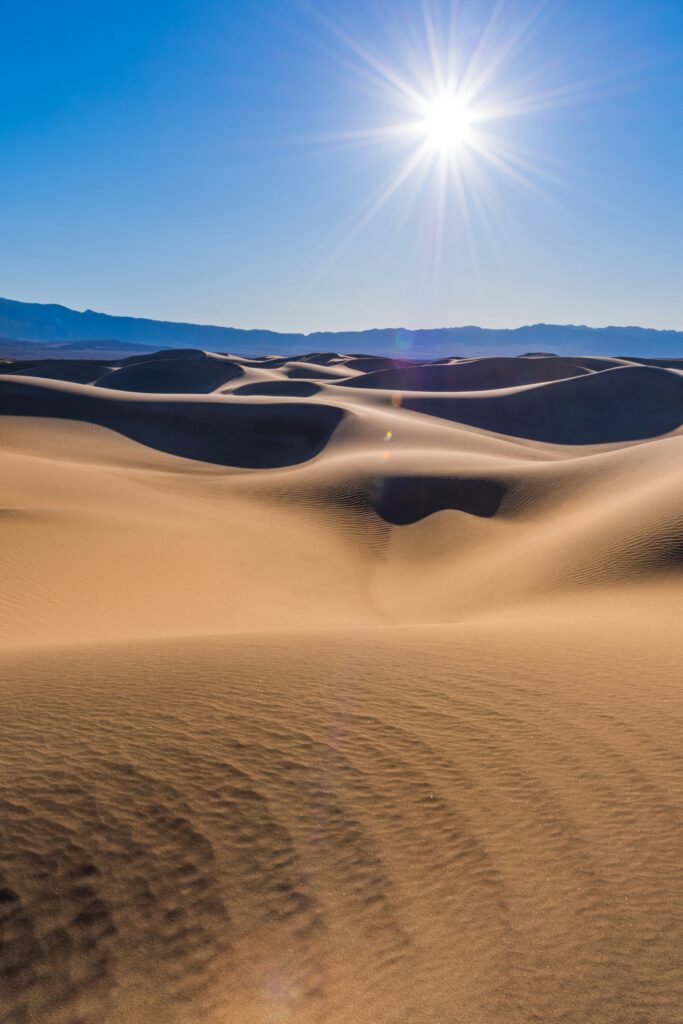
Outdoor Activities on the Dunes
California's sand dunes offer thrilling adventures for outdoor enthusiasts. You can explore pristine landscapes, experience adrenaline-pumping rides, and glide down sandy slopes.
Hiking Trails
Embark on scenic hikes through the dunes to witness breathtaking coastal views. At Guadalupe-Nipomo Dunes Complex, you'll find diverse trails suitable for all skill levels.
Keep an eye out for unique flora and fauna as you traverse the sandy paths. Remember to bring plenty of water and wear sturdy shoes, as walking on sand can be challenging.
For a memorable experience, try a guided night hike. You'll see the dunes in a whole new light under the stars.
Off-Roading
Get your heart racing with off-road adventures on the dunes. Oceano Dunes is a popular spot for ATV and dune buggy enthusiasts.
You can rent vehicles on-site or bring your own. Always follow safety guidelines and stay within designated riding areas to protect the environment.
• Wear a helmet and protective gear • Stay on marked trails • Be aware of other riders and pedestrians • Check tide schedules before venturing near the water
Remember to obtain the necessary permits before your off-roading adventure.
Sandboarding
For a unique thrill, try sandboarding down the dunes. It's like snowboarding, but on sand! Many dune areas offer board rentals and lessons for beginners.
The best time for sandboarding is early morning or late afternoon when the sand is cooler. Wax your board for a smoother ride and faster speeds.
Top sandboarding spots include:
- Kelso Dunes in Mojave National Preserve
- Marina State Beach near Monterey
- Big Sur Sand Hill
Don't forget to bring sunscreen, sunglasses, and a bandana to protect yourself from the sun and sand.

Photography and Scenic Viewing
California's sand dunes offer breathtaking landscapes for photographers and nature enthusiasts. You'll find endless opportunities to capture stunning images and enjoy scenic vistas across the dunes.
Best Times for Photography
Early morning and late afternoon provide the most captivating light for dune photography. During these golden hours, the low sun casts long shadows, creating dramatic contrasts and textures across the sand. Sunrise and sunset are particularly magical, painting the sky and dunes in vibrant hues.
Moonlit nights offer a unique perspective, transforming the dunes into an otherworldly landscape. You might even witness the rare phenomenon of “singing sand” – a humming sound produced by wind-blown sand particles.
Consider visiting during different seasons to capture varied scenery. Spring may bring wildflowers, while winter can offer a dusting of snow on distant peaks.
Photography Tips
To make the most of your dune photography experience, pack a wide-angle lens to capture expansive vistas. A telephoto lens can help you zoom in on distant details and compress dune ridges for dramatic effect.
Use a tripod for stability, especially during low-light conditions. This will allow you to experiment with longer exposures and capture the subtle movement of sand.
Try incorporating foreground elements like vegetation or footprints to add depth to your images. Look for leading lines created by dune ridges to guide the viewer's eye through your composition.
Don't forget to protect your gear from sand. Bring a plastic bag or dedicated camera cover, and avoid changing lenses in windy conditions.
Experiment with different perspectives. Get low to emphasize dune patterns, or climb to a high point for sweeping panoramas. Remember to tread lightly and follow Leave No Trace principles to preserve these delicate ecosystems.
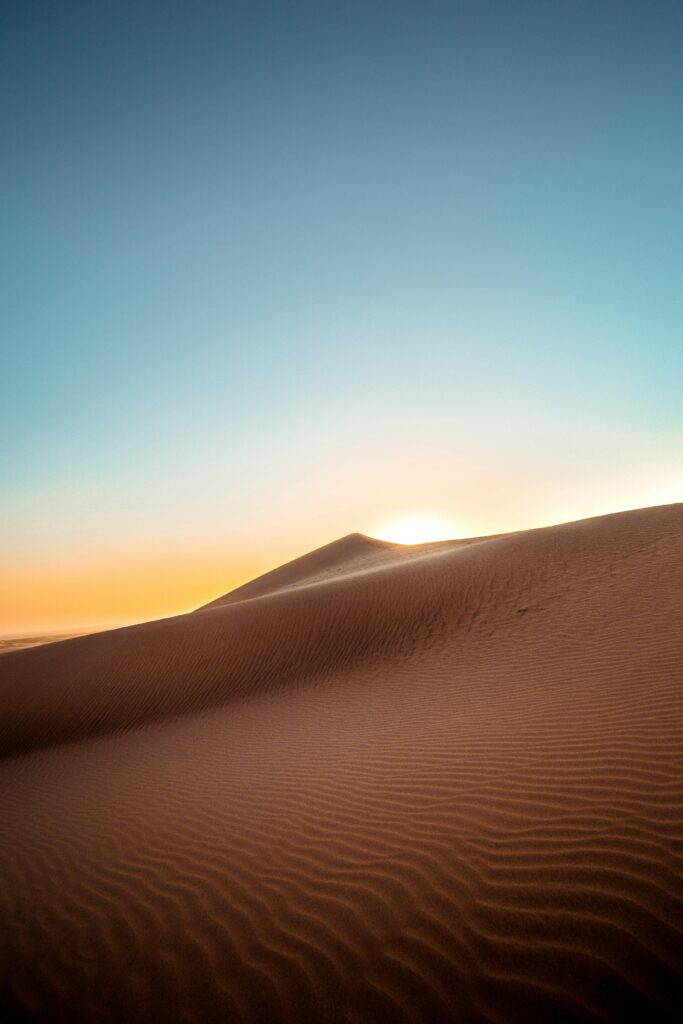
Wildlife Conservation Efforts
California's coastal dunes are home to diverse and fragile ecosystems. Conservation efforts focus on protecting endangered species and establishing wildlife refuges to preserve these unique habitats.
Endangered Species Protection
The Western Snowy Plover and California Least Tern are two endangered bird species that call California's sand dunes home. You'll find dedicated programs aimed at protecting their nesting sites and increasing population numbers.
Volunteers and conservationists work tirelessly to rope off sensitive areas during breeding seasons. This helps keep beachgoers and pets from disturbing nests.
You can participate in citizen science projects to monitor these birds. By joining local wildlife groups, you'll learn how to identify and report sightings, contributing valuable data to conservation efforts.
Wildlife Refuges
Guadalupe-Nipomo Dunes National Wildlife Refuge is a prime example of protected dune habitats. Spanning 18 miles along the central California coast, it offers a safe haven for numerous plant and animal species.
When you visit, you'll discover interpretive trails and viewing areas designed to educate visitors while minimizing impact on the fragile ecosystem. The refuge works to restore native plant communities and control invasive species.
You can support these efforts by respecting designated paths and participating in organized clean-up events. Your involvement helps maintain the delicate balance of these unique coastal environments.
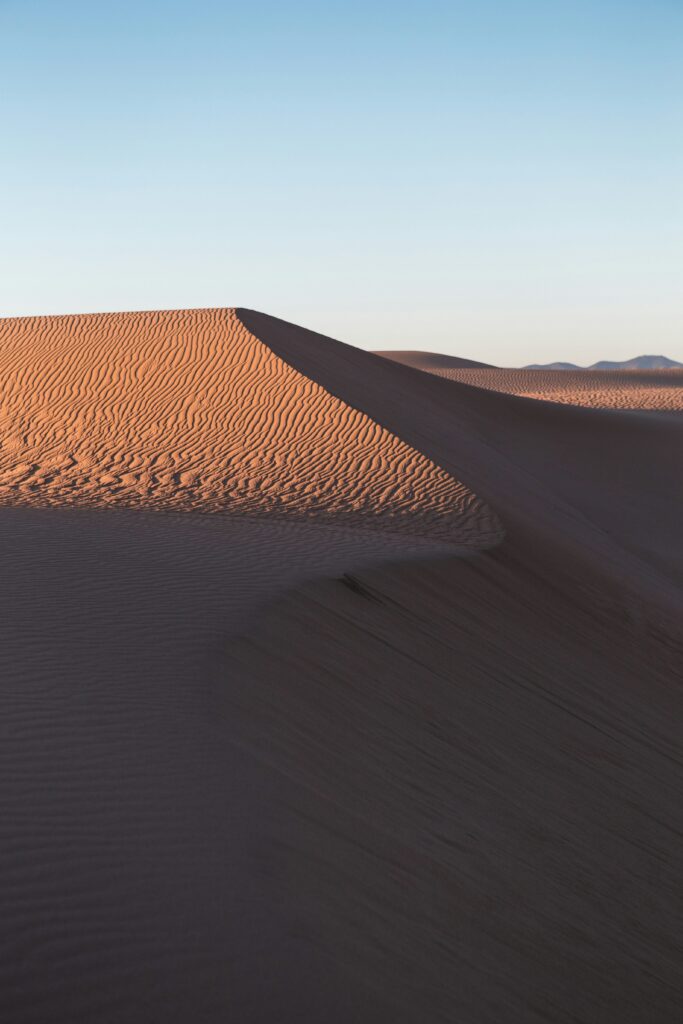
Camping and Overnight Stays
California's sand dunes offer unique opportunities for overnight adventures. You can choose between designated campgrounds with amenities or more rugged backcountry experiences among the dunes.
Designated Camping Areas
At Oceano Dunes, you can set up camp right on the beach. Drive your vehicle south of Post 2 to find your perfect spot in the open dune area. There's no need to worry about defined spaces here – just park and pitch your tent.
Vehicle length is limited to 40 feet, so plan accordingly. Remember, the sand can be tricky to navigate, even with a four-wheel-drive vehicle. Pack smart and bring essential supplies.
For a different experience, try Bodega Dunes Campground. With 99 drive-in sites, you'll have more structured camping options. Book your spot up to six months in advance online or by phone.
Backcountry Camping
For a more immersive dune experience, consider backcountry camping. The Algodones Sand Dunes offer vast open spaces for you to explore and camp.
Start your adventure from Orborne Lookout Park. There are no set trails or campsites, giving you the freedom to choose your own experience. Remember to obtain necessary permits before your trip.
Pack plenty of water and sun protection. The desert environment can be harsh, so come prepared. Always practice Leave No Trace principles to preserve the delicate dune ecosystem for future visitors.

Navigating the Dunes Safely
Exploring California's sand dunes can be thrilling, but it's crucial to prioritize safety. You'll need to take proper precautions and consider guided tours to fully enjoy these natural wonders.
Safety Precautions
When venturing into the dunes, always bring plenty of water to stay hydrated. The sun can be intense, so apply sunscreen frequently and wear protective clothing. Sturdy shoes are a must to prevent burns from hot sand and protect your feet from sharp objects.
Be aware of your surroundings and watch for steep drop-offs. Sand can be unstable, so avoid climbing dunes that appear too steep or loose.
If you're driving, ensure your vehicle is equipped for sand travel. Carry a shovel, tow rope, and tire pressure gauge. Lowering tire pressure can improve traction, but don't forget to re-inflate when returning to paved roads.
Always check weather conditions before your trip. Strong winds can create dangerous situations and reduce visibility.
Guided Tours
Joining a guided tour is an excellent way to explore the dunes safely. Experienced guides know the terrain and can provide valuable insights about the ecosystem.
Many coastal dune areas offer tours, from leisurely nature walks to thrilling dune buggy rides. These excursions often include safety equipment and instruction on proper dune etiquette.
Guided tours can also help you access restricted areas that might be off-limits to individual visitors. This can give you a more comprehensive dune experience while ensuring you don't inadvertently damage sensitive habitats.
Remember to book your tour in advance, especially during peak seasons. Wear comfortable clothing and bring a camera to capture the stunning landscapes you'll encounter.
Permits, Regulations, and Best Practices
Exploring California's sand dunes requires proper preparation and knowledge of the rules. You'll need to obtain permits and follow specific regulations to enjoy these natural wonders responsibly.
OHV Requirements
To ride off-highway vehicles (OHVs) in California's dunes, you must display a permit on your vehicle. At the Imperial Sand Dunes Recreation Area, attach your season permit to the lower corner of your front windshield on the driver's side.
OHVs need to be registered with a green or red sticker from the California Department of Motor Vehicles. Remember to carry your registration card with you while riding.
For your safety, always wear a helmet and other protective gear. Stay within designated riding areas and respect trail closures. Be aware of your surroundings and watch for other riders, pedestrians, and wildlife.
Environmental Regulations
Protecting the delicate dune ecosystems is crucial. In areas like the North Algodones Dunes Wilderness, motorized vehicles are prohibited to preserve the natural habitat.
Respect wildlife by observing from a distance and not feeding animals. Pack out all your trash and avoid disturbing plants and archaeological sites.
Campfires are only allowed in designated fire rings or portable containers. Check local fire restrictions before your visit, as they can change based on weather conditions.
Remember the 14-day camping limit in effect at many dune areas. This helps minimize environmental impact and ensures fair access for all visitors.
Seasonal Events and Activities
California's sand dunes come alive with exciting competitions and vibrant wildlife throughout the year. You'll find plenty of opportunities to participate in thrilling events or observe nature's wonders in these unique coastal environments.
Annual Competitions
Get ready for some sandy excitement at the Oceano Dunes, where you can join or watch thrilling annual competitions. The popular Sand Sculpture Contest lets you unleash your creativity, transforming sand into intricate works of art.
For adrenaline junkies, the Dune Run brings runners from across the state to tackle challenging sandy terrain. If you're into motorsports, don't miss the exhilarating Dune Buggy Races, where skilled drivers navigate the towering dunes at breakneck speeds.
Photography enthusiasts can participate in the Dunes Photo Contest, capturing the ever-changing landscapes in their best light. These events typically take place during the summer months when weather conditions are ideal for outdoor activities.
Seasonal Wildlife
Your visit to California's coastal dunes offers unique wildlife viewing opportunities that change with the seasons. In spring, you might spot endangered Western Snowy Plovers nesting on the beaches near the dunes.
Summer brings an influx of shorebirds, while fall sees the arrival of migrating Monarch butterflies in some dune areas. Winter is an excellent time to observe harbor seals basking on nearby beaches.
At the Guadalupe-Nipomo Dunes, you can join guided nature walks to learn about the diverse ecosystems. Keep your eyes peeled for native plants like beach primrose and sand verbena, which bloom at different times throughout the year.
Remember to respect wildlife habitats and follow local guidelines to ensure these delicate environments remain protected for future generations to enjoy.
Accommodations and Facilities Nearby
When visiting California's stunning sand dunes, you'll find a variety of lodging options and convenient amenities close by. These range from cozy hotels to camping sites, ensuring your stay is comfortable and enjoyable.
Hotels and Lodging
You'll discover numerous accommodations near popular dune areas like Pismo Beach Sand Dunes. Choose from beachfront resorts, budget-friendly motels, or charming bed and breakfasts.
For a unique experience, consider camping at the Guadalupe-Nipomo Dunes Complex. You'll wake up to breathtaking views and the sound of crashing waves.
Many hotels offer dune-view rooms, allowing you to enjoy the sandy landscape from your window. Some even provide equipment rentals for dune activities.
Local Amenities
You'll find plenty of convenient facilities near California's sand dunes. Restaurants, cafes, and grocery stores are often within easy reach, perfect for grabbing a quick bite or stocking up on supplies.
Visitor centers provide valuable information about the dunes, local attractions, and safety guidelines. They're great spots to pick up maps and learn about guided tours.
Many areas offer parking lots, restrooms, and picnic areas for day visitors. Some locations even have designated off-highway vehicle areas for dune enthusiasts.
Remember to check local regulations, as facilities may vary depending on the specific dune location you're visiting.
Conservation and Volunteer Opportunities
California's sand dunes offer unique chances to get involved in preserving these delicate ecosystems. You can make a real difference through community initiatives and hands-on restoration work.
Community Involvement
You can play a vital role in protecting California's sand dunes through various community programs. Volunteer opportunities abound, allowing you to contribute to wildlife conservation and habitat awareness. Consider joining local groups that organize beach cleanups and dune monitoring activities.
These programs often provide training, so you don't need prior experience. You might assist with public education efforts, helping visitors understand the importance of staying on designated paths. Your involvement can also extend to citizen science projects, where you collect valuable data on dune plants and animals.
Restoration Projects
Hands-on restoration work is crucial for maintaining California's sand dune ecosystems. You can participate in projects like the volunteer dune restoration at Fort Ord Dunes State Park. These initiatives often involve removing invasive plants and replanting native species.
Your efforts can directly benefit endangered species like the Mojave Fringe-Toed Lizard. At places like the Guadalupe-Nipomo Dunes, you might help with tasks such as building fences to protect sensitive areas or monitoring wildlife populations.
Restoration work isn't just about physical labor. You can also contribute by helping to raise awareness and funds for these important projects.

